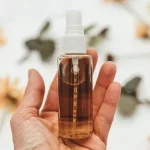Hey there! If you’ve ever wondered what performance‑enhancing drugs (or PEDs, as they’re often called) really are, why they’re such a hot topic, or whether there’s any safe way to use them, you’re in the right place. I’m going to walk you through everything you need to know—no jargon, no preachy lecture, just a friendly chat that gets straight to the point.
What Are PEDs?
In the simplest terms, PEDs are substances that improve a person’s ability to perform—whether that’s lifting heavier weights, running faster, or even staying sharp during a long exam. According to Wikipedia, they’re “used to improve any form of activity performance in humans.” That pretty much covers everything from the steroids you hear about in the Olympics to the caffeine you sip before a big presentation.
Are PEDs the Same as Ergogenic Aids?
“Ergogenic aid” is just a fancier way of saying “something that helps your body work better.” All PEDs are ergogenic aids, but not every ergogenic aid is illegal. Think of it like this: creatine is an ergogenic aid with an excellent safety record, while anabolic steroids are both an ergogenic aid and a banned drug in most sports.
Legal Supplements vs. PEDs
People often blur the line between legal supplements (like protein powder) and PEDs. The key difference is intent and regulation: legal supplements are sold over the counter and are not on any anti‑doping list, whereas PEDs are either prohibited outright or require a therapeutic‑use exemption (TUE) if you have a legitimate medical need.
Quick Look: PED vs. Legal Supplement vs. “Performance‑Boosting” Food
| Category | Typical Example | Legal Status | Typical Use |
|---|---|---|---|
| Illegal PED | Anabolic steroids | Banned in sport | Boost muscle mass & strength |
| Legal PED (Prescription) | Testosterone replacement | Allowed with TUE | Treat hormone deficiency |
| Legal Supplement | Creatine monohydrate | Unrestricted | Increase power output |
| Performance‑Boosting Food | Caffeine | Generally allowed (dose limits) | Improve alertness & endurance |
Types of PEDs
Let’s break down the big families of PEDs you’ll hear most about. Knowing the categories helps you understand why each one carries its own set of risks.
Which Categories Dominate the WADA List?
The World Anti‑Doping Agency (WADA) maintains a massive “Prohibited List.” The most common groups on that list are:
- Anabolic steroids – synthetic versions of testosterone.
- Stimulants – amphetamines, ephedrine, and even high‑dose caffeine.
- Hormone modulators – growth hormone (hGH) and selective androgen receptor modulators (SARMs).
- Blood‑doping agents – erythropoietin (EPO) and synthetic oxygen carriers.
- Diuretics & masking agents – used to hide other drug use.
A study of the WADA banned list shows these categories together represent more than 90 % of all substances flagged as illicit in competitive sport.
Common Illegal PEDs
When people talk about “taking steroids,” they usually mean one of these:
- Anabolic steroids – e.g., nandrolone, stanozolol.
- EPO – boosts red‑blood‑cell count, popular in endurance sports.
- Human growth hormone (hGH) – promotes tissue growth and recovery.
- SARMs – marketed as “safer” steroids but still risky.
- Stimulants – amphetamines, cocaine, some prescription ADHD meds.
Legal but Risky PEDs
Even a prescription can become a problem if used without medical supervision:
- Testosterone replacement therapy (TRT) – legal with a doctor’s note, banned in competition without TUE.
- Insulin – essential for diabetics, but when misused it can cause hypoglycemia and heart stress.
- Asthma inhalers (e.g., high‑dose salbutamol) – allowed up to a certain threshold.
- High‑dose caffeine (>200 mg per hour) – can be flagged as a stimulant.
Comparison Table: Illegal vs Legal vs Supplements
| Category | Example | Action | Typical Sport | Legal Status |
|---|---|---|---|---|
| Illegal | Stanozolol | Androgen receptor agonist | Weightlifting | Banned |
| Legal (Prescription) | Testosterone (TRT) | Hormone replacement | Track & field | Allowed with TUE |
| Supplement | Creatine | ATP regeneration | All sports | Unrestricted |
| Food | Coffee (caffeine) | Central nervous system stimulant | Endurance | Allowed (dose‑limit) |
How They Work
Understanding the science helps demystify the hype. Below are the core ways each class boosts performance.
What Do Anabolic Steroids Do?
These drugs mimic testosterone, binding to androgen receptors in muscle cells. The result? Faster protein synthesis, which means bigger, stronger muscles in less time. They also help recover from intense training by reducing muscle‑fiber breakdown.
Why Does EPO Improve Endurance?
EPO triggers your kidneys to make more red blood cells. More red cells mean more oxygen can be delivered to working muscles, letting you sustain high‑intensity effort longer before you “hit the wall.”
Stimulants: Speeding Up Your Brain and Body
Stimulants crank up the central nervous system, raising levels of dopamine and norepinephrine. You feel more alert, reaction times drop, and perceived effort drops—so a tough workout feels a bit easier. The catch? The heart works harder, and you might feel jittery or anxious.
From Pill to Performance: A Mini‑Infographic Idea
If you ever write this article for a blog, a simple flowchart could show: Ingestion → Absorption → Target Receptor → Physiological Effect → Performance Outcome → Side‑Effect Risk. Visuals like that keep readers glued.
Benefits & Risks – A Balanced Look
Let’s be honest: the short‑term gains can look tantalizing. But every upside has a shadow.
What Short‑Term Gains Can You Expect?
Studies cited by Healthline suggest typical improvements like:
- Strength ↑ 5‑15 % with anabolic steroids.
- Endurance ↑ 10‑20 % with EPO or blood‑doubling methods.
- Reaction time ↓ 5‑10 % with moderate stimulants.
Those numbers sound great—until you factor in the health toll.
PED Side Effects You Must Know
- Anabolic steroids: liver toxicity, high cholesterol, severe mood swings, testicular atrophy (men), excess facial hair (women), and increased risk of heart disease.
- EPO: blood clots, stroke, hypertension, and, in extreme cases, sudden death.
- Stimulants: elevated blood pressure, anxiety, insomnia, and potential for addiction.
- Growth hormone: joint pain, insulin resistance, and swelling (edema).
According to Mayo Clinic, many of these risks become permanent if the drugs are misused for months or years.
Long‑Term Consequences
The longer you stay on the PED train, the higher the odds of chronic conditions: cardiovascular disease, liver cirrhosis, hormonal imbalances that affect fertility, and even psychiatric disorders like depression or aggression (“roid rage”).
Real‑World Story: From a Tiny Pill to a Big Problem
One former professional cyclist recalled—thanks to a USADA interview—that a seemingly harmless red capsule containing testosterone was the first step. Within weeks, he accepted an EPO injection that was smuggled across borders. The short‑term “edge” felt amazing, but the emotional and physical fallout lasted far longer than his career.
Legal Landscape & Anti‑Doping Rules
Even if you’re not a professional athlete, the legal status of these substances matters because it influences your health insurance, employment, and even travel.
When Does a Substance Become “Banned”?
WADA says a drug is prohibited if it meets at least two of three criteria:
- Potential to enhance performance.
- Potential health risk to the athlete.
- Violation of the “spirit of sport.”
That means some meds, like certain asthma inhalers, are normally fine but become illegal if you exceed a dosage threshold.
How to Check If a Drug Is Banned
The easiest tool is the Global Drug Reference Online (GlobalDRO). You simply key in the substance name, and it tells you whether it appears on the current WADA list. According to GlobalDRO, the database also flags dosage limits for legal medications.
Therapeutic Use Exemptions (TUEs)
If you genuinely need a medication that’s on the banned list—say you have asthma and need a high‑dose inhaler—you can apply for a TUE. The process involves medical documentation, a review by your sport’s anti‑doping agency, and often a strict monitoring plan. Without a TUE, even legitimate therapy can land you a suspension.
Quick‑Reference Chart: Drug → Banned? → TUE Needed?
| Drug | Banned? | TUE? |
|---|---|---|
| Stanozolol (steroid) | Yes | No (no medical justification) |
| Testosterone (TRT) | Yes | Yes (if documented deficiency) |
| Insulin (diabetes) | Yes (high dose) | Yes (medical proof) |
| Caffeine (high dose) | Yes (≥200 mg/hr) | Rarely, only in research settings |
| Creatine | No | N/A |
Safer Alternatives & Performance‑Boosting Strategies
If you’re looking for that extra edge without the legal headaches or health scares, there are plenty of evidence‑based approaches that work wonders.
Can Nutrition & Training Replace PEDs?
Absolutely—when done right. A diet rich in lean protein (1.6‑2.2 g per kilogram of body weight), complex carbs for sustained energy, and plenty of fruits and vegetables for micronutrients sets the stage for optimal adaptation. Pair that with a periodized training program (progressive overload, recovery weeks, and sport‑specific drills) and you’ll see steady, lasting gains.
Legal Supplements with Strong Evidence
Here are the few that science backs up:
- Creatine monohydrate – increases phosphocreatine stores, helping you produce more ATP during short, explosive efforts.
- Beta‑alanine – buffers acid in muscles, delaying fatigue during high‑intensity work.
- Beetroot juice (nitrates) – improves blood flow, modestly boosting endurance.
All of these are on the WADA list as “allowed” and have an excellent safety profile when used as directed.
When Is Prescription Medication Acceptable?
The golden rule: Only use prescription meds under a doctor’s supervision, and only for a diagnosed medical condition. Self‑prescribing a testosterone shot because you “feel weak” is a slippery slope. If you truly need something, get a proper evaluation, discuss potential performance implications, and, if you’re an athlete, apply for a TUE early.
Sample 30‑Day Natural Performance Plan
- Day 1‑7: Focus on sleep—aim for 7‑9 hours, keep the room dark, limit screens.
- Day 8‑14: Add a daily 5‑gram creatine dose (mix with water).
- Day 15‑21: Incorporate two high‑intensity interval training (HIIT) sessions per week.
- Day 22‑30: Introduce beetroot juice (250 ml) 2‑3 hours before key workouts.
- Throughout: Stay hydrated (≈35 ml/kg body weight) and keep a balanced macro‑nutrient split.
Follow this plan for a month and you’ll likely notice stronger lifts, better recovery, and clearer focus—no shady pills required.
Key Takeaways
Performance‑enhancing drugs can deliver dramatic short‑term gains, but they come with serious PED risks that often outweigh the benefits. Understanding the different PED types, how they work, and the legal landscape helps you make informed decisions. Safer, evidence‑based alternatives—like proper nutrition, targeted training, and proven supplements—can give you the edge you crave without jeopardizing health or reputation.
So, what’s your next move? If you’re an athlete, check the GlobalDRO for any medication you’re considering. If you’re just curious, stick to the natural strategies above and keep your body—and conscience—in good shape. Got questions or personal experiences with PEDs? Drop a comment below; I’d love to hear your story and help navigate the maze together.


















Leave a Reply
You must be logged in to post a comment.